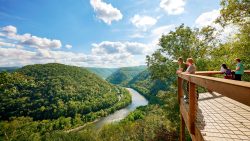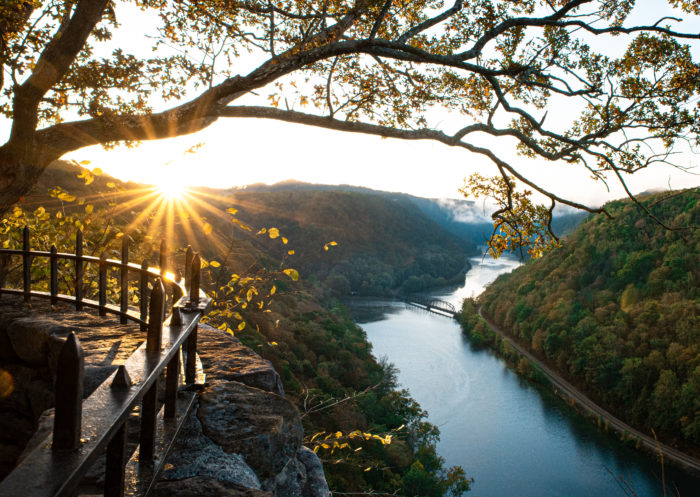Whitewater 101: paddling WV’s world-class rapids
One of the best ways to enjoy West Virginia’s stunning outdoor scenery is with the plain, pure fun of whitewater rafting.
3 things you should know about our whitewater rivers:
- Mountain State rivers are beautiful, carving their way through narrow gorges, lush forest canopies and labyrinth-like boulder clusters that seem straight out of a fantasy movie.
- They’re also easy to get to. In Fayetteville, locals boat world-class whitewater every day after work.
- And our whitewater is diverse. Ranging from mild to wild, you can tailor a trip that is just as relaxing or exciting as you want it to be.
Most importantly: it’s for anybody, even beginners.
The most popular whitewater rafting rivers are the Cheat, New, Gauley, Shenandoah and Potomac rivers.
A pro guide can lead the way, but here are some basic whitewater “do’s and don’ts” that will introduce you to some of the most fun to be had in West Virginia:
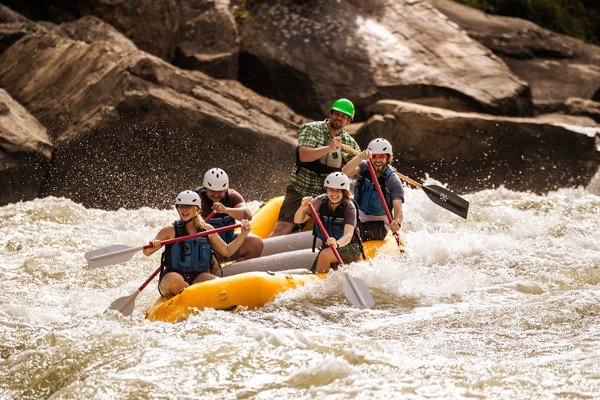 1. Start small, then go big
1. Start small, then go big
There are plenty of easy rivers to “wet your feet” in before you decide to commit to the big stuff. The rapids are rated from class I-V.
The best thing to do as a beginner is look for a river that has mostly Class I or II rapids– this means that there will be some obstacles, some small waves, and you might even get a little wet, but the risk is minimal.
- The Upper New River above Thurmond is a great introduction to rafting, and there is plenty of flatwater where you’ll have time to enjoy the scenery or look for bald eagles.
- Shenandoah and Potomac in the summer have low water for a smooth, easy family float.
If you want to kick it up a notch, look for Class III rivers: there will be big waves, and you’ll definitely get wet, but there will not be too many critical obstacles to watch out for.
- The Narrows of the Cheat River in the northern part of the state are great for this.
- In spring and fall, the Shenandoah and Potomac rivers are big-splashing Class III fun.
- The Lower New River– which at high water is a rip-roaring Class V affair– mellows slightly as its water levels drop in July and August. Its lower water levels will expose more rocks, but with an experienced guide, you’ll have a great time.
2. Dress for success
The right gear is the key to have a good time on the river. Make sure you ask your guide how cold it will be, and whether you’ll need a wetsuit and/or splash jacket– most outfitters will provide them.
In the summer months on the Lower New River, you’ll only need a swimsuit and sunscreen; the water will be a perfect temperature for lots of splashes and swimming.
But in the spring months when the air and water are a bit cooler, you’ll want to consider a water-resistant splash jacket that keeps cold water off, or even a wetsuit, which lets water through to be warmed by your body.
Cold water gear is essential on the Upper Gauley, where the river emerges cold and clear out of the depths of Summersville Reservoir. The best water levels are during September and October releases, and the huge waves and falls are guaranteed to soak you!
Footwear also depends on the season. Most rafters prefer sport shoes with no-slip soles. For the cold-water Gauley, you’ll want either polypropylene socks, or heavier-duty wetsuit booties.
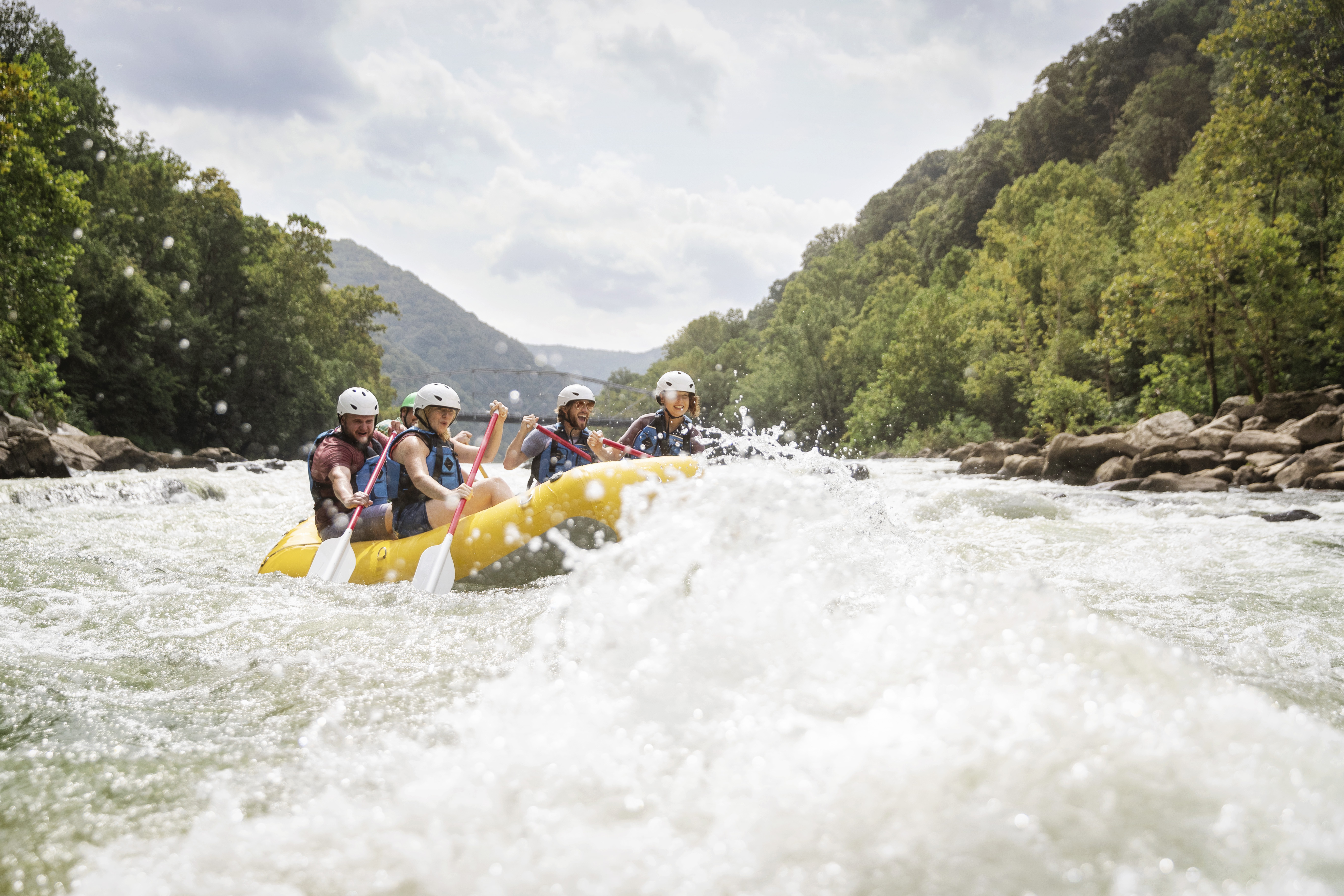 3. Swim, swim, swim
3. Swim, swim, swim
No, you don’t have to be Michael Phelps or even the captain of your high school swim team to safely enjoy rafting.
Your PFD (Personal Floatation Device) will do a great job of keeping your head above water. Your guide will help you secure it, so you can take comfort in knowing that yes, it will quickly lift you up to the surface again.
But, you’ll still need to be comfortable being tossed around a little in the water, just in case. It helps to take deep breaths at the troughs (low points) of waves, and hold your breath as your head bobs underwater at the crests (high points) of waves.
There are 2 types of swimming, so you’ll need to know whether to face downstream and use your legs to bounce of of rocks in shallow water, or to actively swim away from obstacles. Your guide will let you know which.
The best way to practice all of this is to voluntarily swim through some mild rapids. Waves like “Swimmer’s Rapid” on the New are so safe that guides will let you jump out of the raft and just float on through them.
4. Sometimes, you can DIY
You’ll definitely want a guide to help you through the whitewater if you’re a beginner. But, you can take on more of a challenge than just paddling with a group.
Book a “duckie” trip, where you’ll be in control of your very own inflatable kayak. The guides for the trip will lead you through, and “run safety” at the rear.
The cool thing about these duckie trips is that you can run sections of river that bigger rafts can’t get to, like the low-water middle Gauley, or the “dries” of the New River below Hawk’s Nest Dam.
If you’re an intermediate paddler and confident enough to take your own trip, you can also rent canoes at the Summersville Lake Marina or “demo” different sit-on-top kayaks and stand-up-paddleboards from the ACE gear shop (you’ll have to provide your own PFD, though). You can take your own adventure on non-commercial rivers like the Elk, Bluestone and Meadow.
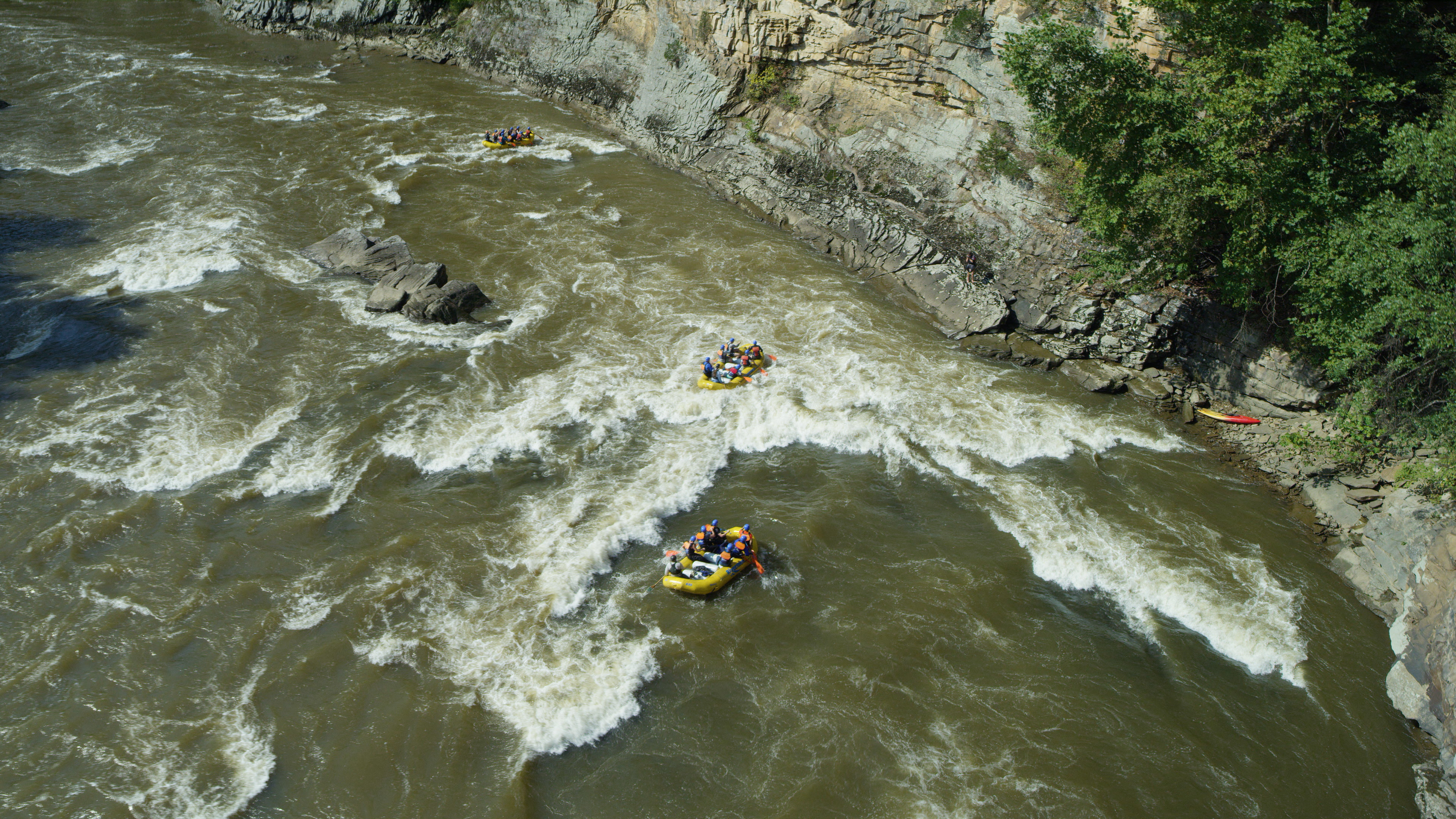 5. Listen to your guide
5. Listen to your guide
There are very few hard-and-fast rules in whitewater boating. Sometimes you swim to shore, other times you swim to the middle of the rapid. Sometimes you need to paddle like mad, other times you wait until the last minute to really “dig it in.” Sometimes you absolutely want to “surf” back into the tail end of a recirculating wave so that the boat stays in one place. It all comes down to very complicated variables that you can only learn by spending hundreds of hours on the river.
And your guide will know what to do. Obey. Obey!
When your guide tells you to paddle harder than you ever have before, do it, it’s not a suggestion. When your guide tells you which direction to swim if you fall out, you’d better remember. Whitewater is fun, and the best way to keep it that way is to listen carefully to your guide.
Are you ready for whitewater season in West Virginia?
Find more whitewater adventureThis post was last updated on March 15, 2022

